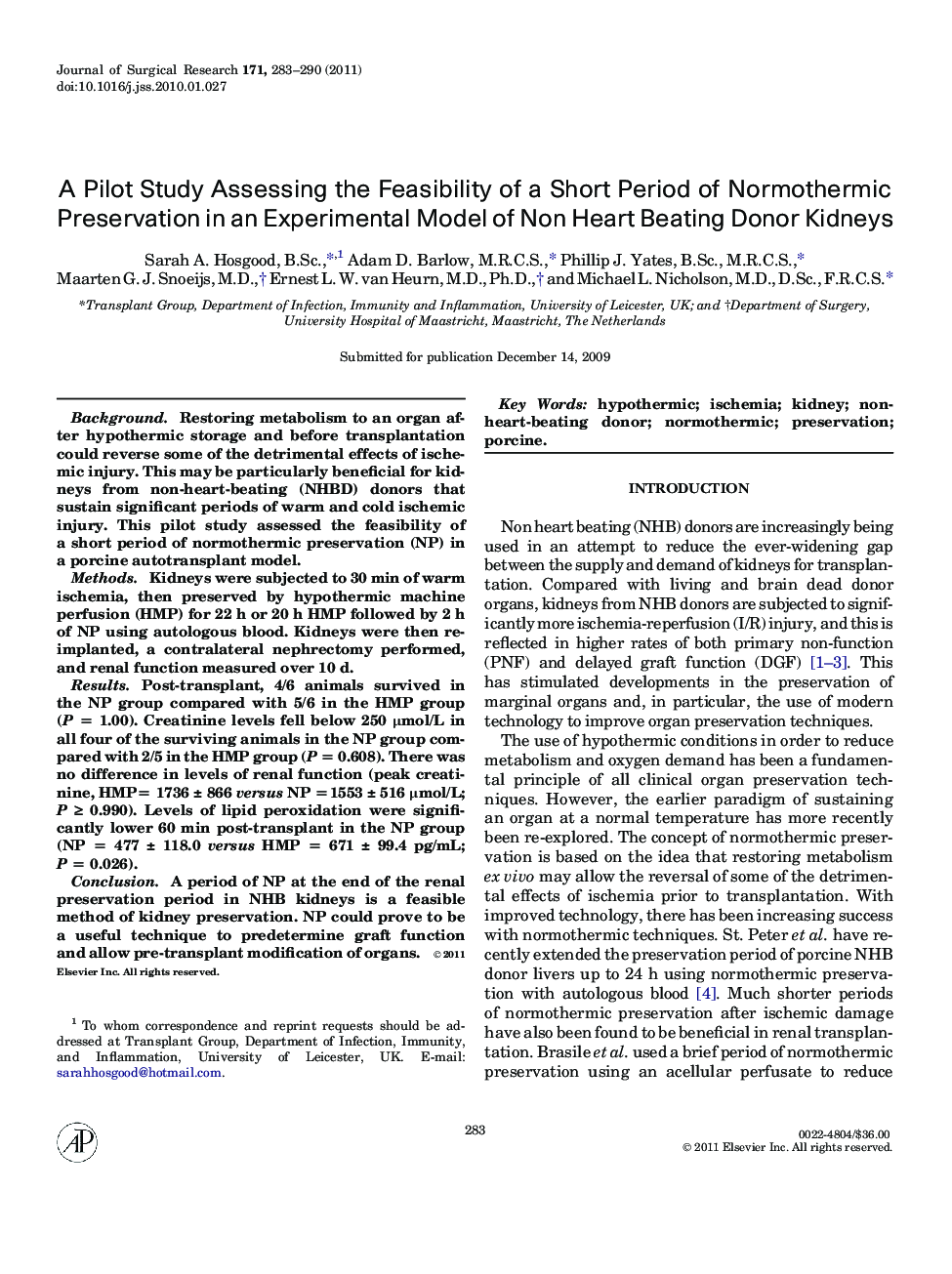| Article ID | Journal | Published Year | Pages | File Type |
|---|---|---|---|---|
| 4302063 | Journal of Surgical Research | 2011 | 8 Pages |
BackgroundRestoring metabolism to an organ after hypothermic storage and before transplantation could reverse some of the detrimental effects of ischemic injury. This may be particularly beneficial for kidneys from non-heart-beating (NHBD) donors that sustain significant periods of warm and cold ischemic injury. This pilot study assessed the feasibility of a short period of normothermic preservation (NP) in a porcine autotransplant model.MethodsKidneys were subjected to 30 min of warm ischemia, then preserved by hypothermic machine perfusion (HMP) for 22 h or 20 h HMP followed by 2 h of NP using autologous blood. Kidneys were then re-implanted, a contralateral nephrectomy performed, and renal function measured over 10 d.ResultsPost-transplant, 4/6 animals survived in the NP group compared with 5/6 in the HMP group (P = 1.00). Creatinine levels fell below 250 μmol/L in all four of the surviving animals in the NP group compared with 2/5 in the HMP group (P = 0.608). There was no difference in levels of renal function (peak creatinine, HMP= 1736 ± 866 versus NP =1553 ± 516 μmol/L; P ≥ 0.990). Levels of lipid peroxidation were significantly lower 60 min post-transplant in the NP group (NP = 477 ± 118.0 versus HMP = 671 ± 99.4 pg/mL; P = 0.026).ConclusionA period of NP at the end of the renal preservation period in NHB kidneys is a feasible method of kidney preservation. NP could prove to be a useful technique to predetermine graft function and allow pre-transplant modification of organs.
